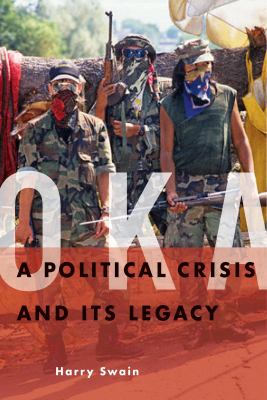
print
|
Oka : a political crisis and its legacy
Copies
7 Total copies, 7 Copies are in,
0 Copies are out.
Authors
Subjects
Swain, Harry, 1942-
Mohawk--Québec (Province)--Kanesatake Indian Reserve--Claims.
Mohawk--Québec (Province)--Kanesatake Indian Reserve--Government relations.
Native peoples--Canada--Claims.
Native peoples--Canada--Government relations.
Québec (Province)--History--Native Crisis, 1990.
Canada--Politics and government--1984-1993.
Mohawk--Québec (Province)--Kanesatake Indian Reserve--Claims.
Mohawk--Québec (Province)--Kanesatake Indian Reserve--Government relations.
Native peoples--Canada--Claims.
Native peoples--Canada--Government relations.
Québec (Province)--History--Native Crisis, 1990.
Canada--Politics and government--1984-1993.
Language
English







